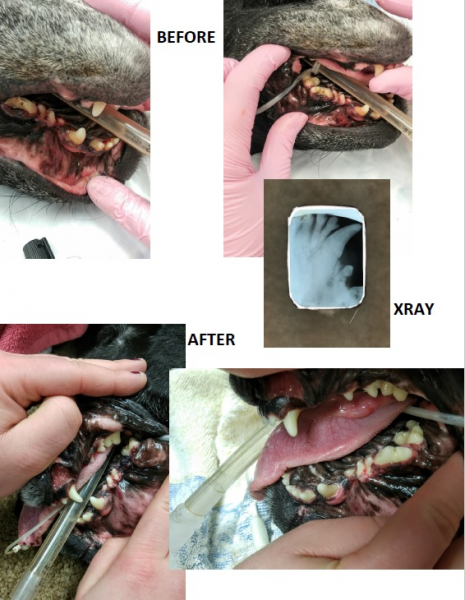This year, Clara is in friendly competition with her owner Dorothy, to lose weight!
RISKS – 6 year old Clara is a domestic shorthair spayed female feline who has over the last 5 years grown from an ideal weight of 10.5lbs to 14.4lbs. Clara is at risk of develping diabetes, heart disease as well as arthristis and other joint and mobility issues.
CHALLENGES – Clara seeks food in every waking moment, scavenging from other pets, grocery items left out, dishes left in the sink. She is relentless and never seems to be satisfied. She also lives with 3 other cats and two dogs. Not all animals like the meal feeding routine.
PLAN – We would like for Clara to lose 2lbs over the next 6 months. We are going to try Royal Canin Satiety dry kibble (1/2 cup per day) with Purina Veterinary Diet Overweight Management (1/2 can per day). We will split into 2 meals daily to try and minimize her other sources of food. We will figure out a form of exercise for Clara (for example havign to go up or down stairs for meals). Because feeding toys do not interest Clara, we will feed the wet food in a mug; to prolong her food injestion.
RISKS – Dorothy’s weight, similar to Clara, has been creeping up, especially in the last five years. This puts Dorothy at similar risks as Clara.
CHALLENGES – Finding time to exercise during her very hectic schedule can prove challenging. When the cook diets, everyone needs to diet and sometimes there is resistance!
PLAN – Dorothy would like to lose 20lbs over the next 6 months. In order to accomplish this, the plan is to measure portion size, increase vegetable consumption, decrease starches and proteins to 2 servings per day and limit sauces, commercial dressings and condiments. Packaged foods and snacks have already largely been eliminated. Dorothy plans to make time for 20 minutes per day of exercise.
Update March 2019;
Dorothy’s New Year’s resolution hasn’t been as ambitious as hoped. Outside walking has been treacherous and the treadmill feels like torture. Food plan is good, just needs portion size tweaked. In total she has lost 6 pounds, and here’s hoping the nice weather is here for more walking.
Clara also has had some challenges. We slowly transitioned to a satiety diet that indeed seemed to keep hunger at bay. Unfortunately for reasons not well understood, Clara developed pancreatitis, did not eat for almost 3 weeks and was hospitalized for treatment. She did lose weight during that time but for the wrong reasons.
Clara has now recovered but had to be transitioned to a low fiber diet. She has regained some of the weight, although she is still down 0.8 pounds. She now needs to have her food allocation adjusted. Also with the nice weather she spends a lot of time in the outside catio and isn’t so focused on food. From the experience with Clara it became clear that weighing the food was a lot more accurate than using a measuring cup. Calorie wise most dry foods are similar calories per gram but the volume is very different and just a few kibbles can weigh an extra few grams which over the course of a month can be significant. It seemed to be easier to weigh out the food for the day into a container and portion it out.
In conclusion, we have been successful and will continue with the plan.














Recent Comments